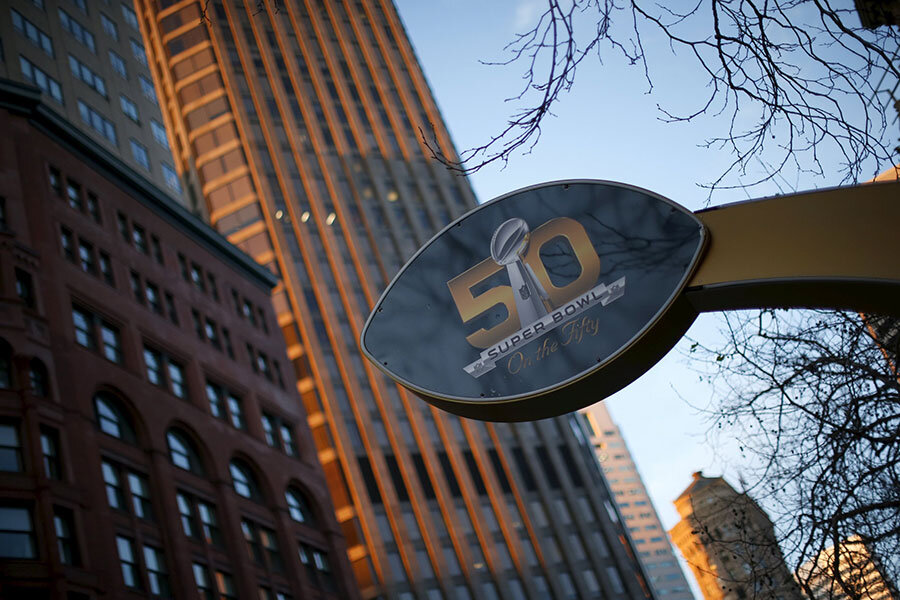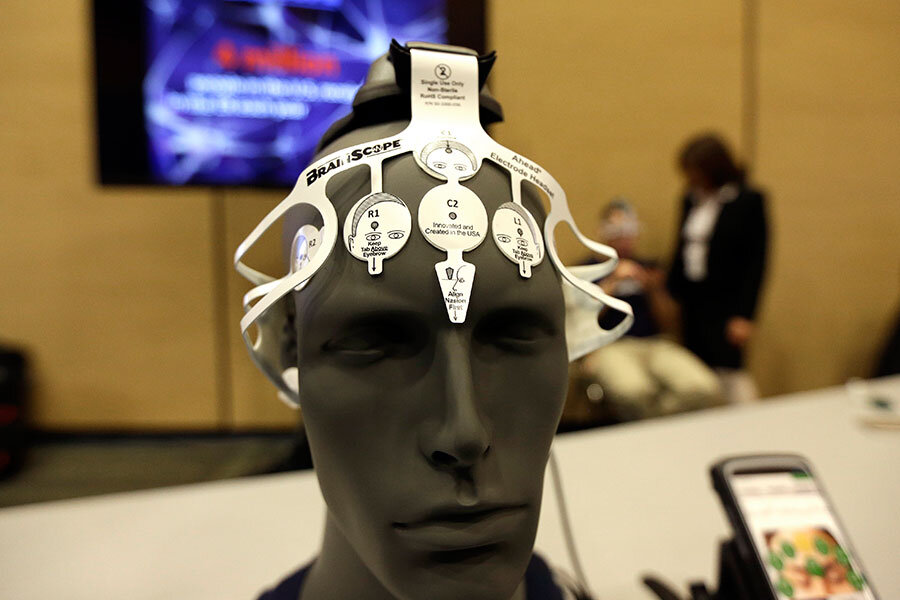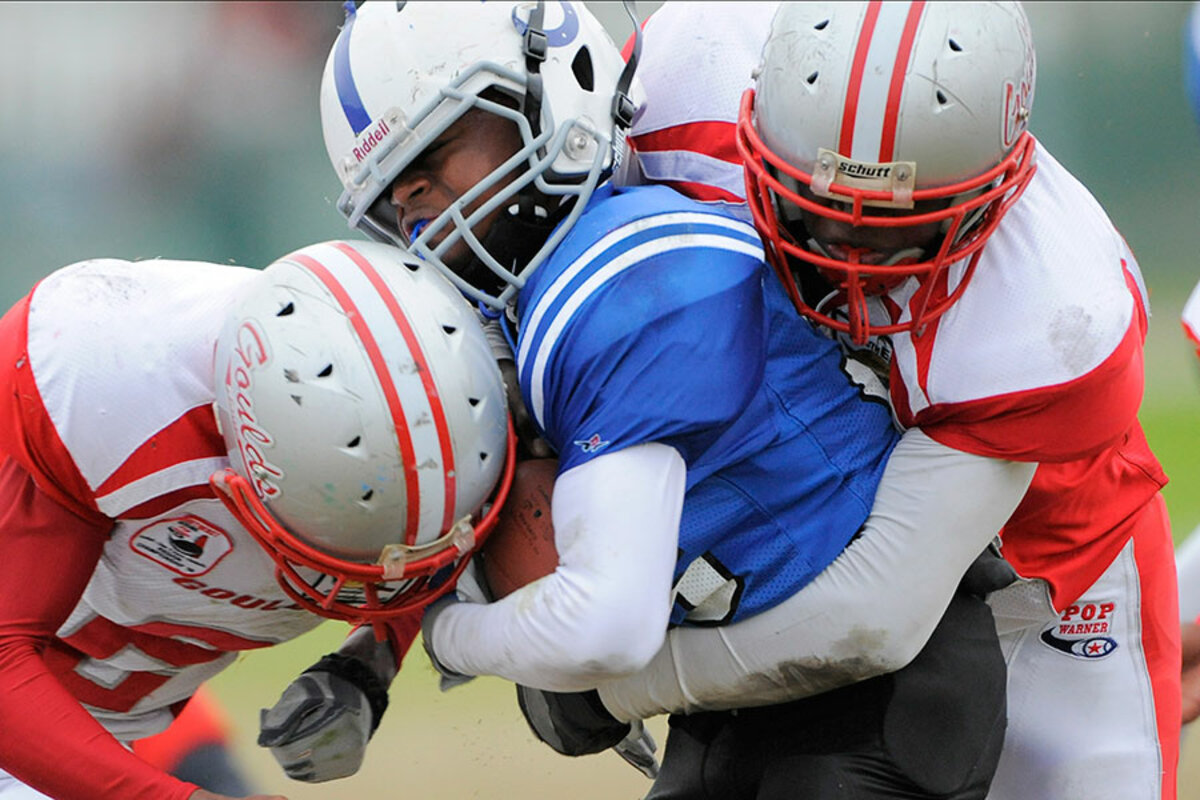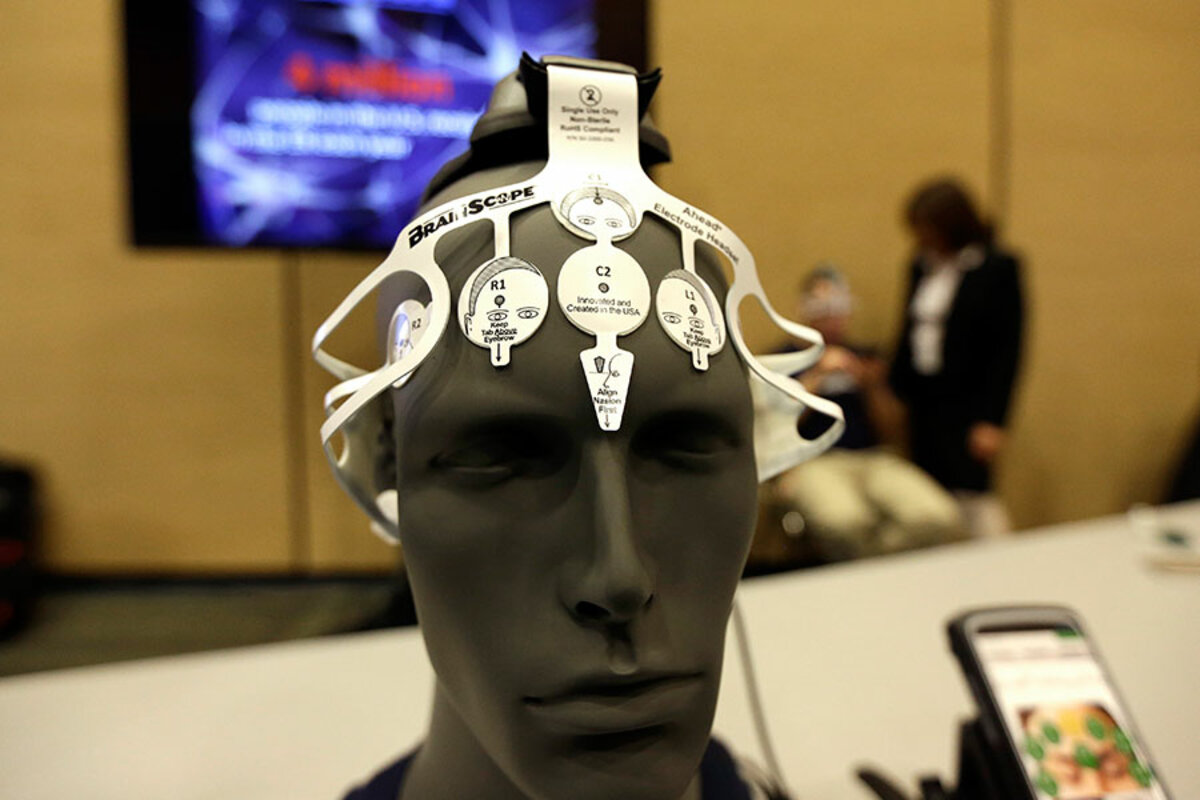Super Bowl 50: Even in NFL's golden era, hints of a sweeping change
Loading...
| Los Angeles
National Football League news this week told two dramatically different stories.
On one hand, there was the run-up to the Super Bowl, with all the anticipation and intrigue around whether the Denver Broncos can stop the juggernaut that is Cam Newton and the Carolina Panthers.
Last year’s ratings for the game – a record 114.4 million viewers – suggest the NFL has never been more popular.
Yet there was also the story of Kenny Stabler, the late Oakland Raiders quarterback who was revealed to have been diagnosed with CTE, the degenerative brain condition linked to many former professional football players.
The contrast was both poignant and apt, many say.
At a time when the NFL is the unrivaled king of American professional sports, concerns about the long-term health effects of tackle football are nudging their way further and further into the mainstream discussion.
After years of pressure, news reports and firsthand accounts have forced awareness on even the most casual observer, says Dan Lebowitz, executive director of the Center for the Study of Sport in Society at Northeastern University in Boston.
Oscar-nominated “Concussion” tells the story of the doctor who discovered chronic traumatic encephalopathy (CTE) in former players, and the book “NFL Confidential” is a memoir of the 2014 football season written anonymously by a current player – outlining in vivid detail the pressures to play through injuries.
“If we look cross-country, this narrative is having an effect,” Mr. Lebowitz says.
As of 2012, enrollment for Pop Warner, the nation’s largest youth tackle football league, was down 12 percent from previous years. Enrollment has remained flat since that drop, says league spokesman Josh Pruce.
But the trend goes beyond the grass-roots level to the number of high-profile voices questioning whether they would let young boys in their families play football.
Recognizing the potential threat, the sport is already changing. New rules on the field in the NFL are only a start. The future could see no tackle football at all for the youngest players – switching to flag football to learn the fundamentals. High schoolers could practice without helmets to teach them how to slow down and tackle properly – not use their heads as weapons. And pro players could be forced to take a mandatory number of games off after a diagnosed concussion.
The game is in no immediate danger of collapse. But it is fast becoming clear that the health of the sport – much less its players – will likely demand significant changes.
“This groundswell will continue to gain ground as more studies show the long-term effects of the game and former players continue to come out discussing the early onset of dementia and other problems,” adds Lebowitz.
Recent years have seen a number of pro football players commit suicide, with post-mortems confirming a diagnosis of CTE. Other players have reported significant mental challenges that they attribute to repeated concussions.
Letting your son play football
The shift in attitudes about tackle football is apparent at all levels, but perhaps nowhere more so than in youth football.
On a recent Saturday, teams of boys of various ages filled the fields at the Studio City Recreation Center in Los Angeles. They are playing flag football, not tackle. Daniel, the father of an 8-year-old player (and who gave only his first name), says: “I wouldn’t mind him playing tackle football, but my wife would not allow it.”
Nearby, his wife nods vigorously, adding, “never.”
A few miles away, at the Sepulveda Basin Recreation Center, independent contractor José Garcia watches teams of young boys play flag football.
“If I had a son, I would never let him play football,” he says. “I used to be a fan, but not any more because the pro sports are not pure anymore.”
He adds that the pro league’s unwillingness to tackle health and drug issues has turned him off the game. “I watch some college sports now, maybe basketball, but not football, not anymore.”
President Obama once said that, if he had a son, he’d “have to think long and hard before I let him play football.” Prominent former players such as Mike Ditka have made similar comments. Hall of Famer Harry Carson, a former New York Giants linebacker and now an activist on the issue of brain injuries, has banned his 6-year-old grandson from playing football.
How can the game be safer?
Partly to address such concerns, football has begun implementing changes.
During the past three years, the NFL – a $440 billion industry – has made rule changes such as authorizing athletic trainers stationed in sky boxes to stop play if a player exhibits signs of injury. On-the-field rules have emphasized a ban on all reckless contact to the head and neck. And the league is looking into new helmet designs and brain-scan technologies to lower the risks of head injuries and to diagnose them more accurately.
The new Heads Up NFL training program also coaches techniques that protect players from head-to-head collisions. Nearly every state now has laws restricting contact during public school practice times. At Pop Warner, players can only engage in contact football during one-third of their practice time.
But research on the risks and ways to mitigate damage from concussions is in its infancy, points out researcher Erik Swartz at the University of New Hampshire. He recently released a study on helmetless tackling drills to prevent head impact and reduce the risk of concussions in college football players. He is currently studying the drills with high school students.
The idea behind the Helmetless Tackling Training, points out Professor Swartz, is that practicing without protective equipment, like helmets, will train players instinctively to keep their heads out of the game.
“If they do it over and over again in practice, it will become second nature during a game,” he says via e-mail. He is quick to add, however, “we would never want to send the message that any contact sport, like football, is completely safe, no matter how much work we do to mitigate the risk.”
While research is important to reducing risk of injury, a more thorough understanding of the risks could change public tolerance for the sport, says Dennis Deninger, professor of sport management at Syracuse University in New York.
“If new studies emerge in coming years that show what was thought to be a small minority is instead actually a majority, or a significantly larger percentage of young men permanently injured by playing football,” he adds via e-mail, “then opinions and participation may begin to change dramatically.”
Changing a 'suck it up' culture
More research is needed to drive changes in attitudes among players, say experts in sports medicine. Football has embraced a “play through the pain” or “suck it up” culture for all types of injuries, says Chicago-based orthopedic surgeon Benjamin Domb.
Now that the long-term consequences of ignored injuries are being discovered, “athletes and their parents are fighting back against that culture,” he says via e-mail.
Domb also has two young sons, ages 1 and 5. He admits to being a fan of the game but has strong reservations about his own children’s involvement.
“I would think very carefully before allowing my son to play football,” he says.
This tension between fan and parental values is largely unresolved, says Fordham University theologian Charles Camosy.
“Anecdotally, I know several hard-core football fans who are really being confronted with this as a serious moral issue,” he says via e-mail. “It is so connected to our lives – particularly our social lives – that it is really, really difficult” to give up.
For his part, Lebowitz suggests such fundamental shifts to cultural values can sometimes need 20 years to take hold. But he adds: “At the end of the day, there is a moral and social responsibility to make changes.”








